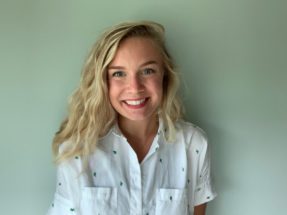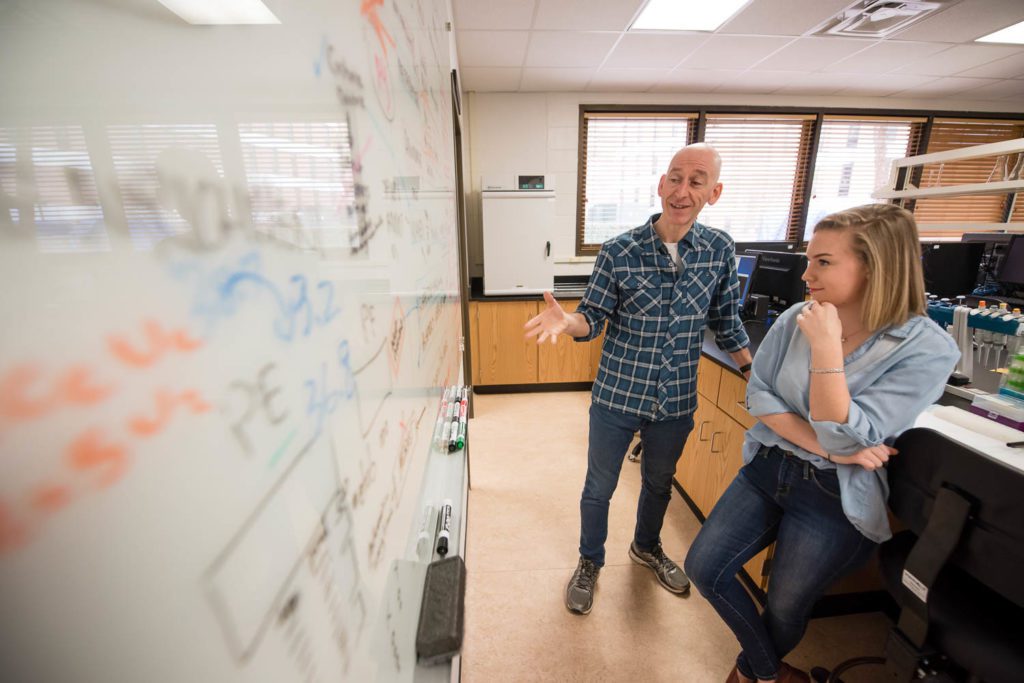Class scheduling luck started Hayley Hassler on her path to COVID immunity research
When former Clemson University associate professor of microbiology Tamara McNealy wanted an undergraduate in her lab to take a relatively new “Introduction to Applied Genomics” course, Hayley Hassler was the only one who could fit it into her fall schedule.
Hassler did not know what applied genomics entailed, but she agreed to register for the class.
She also did not know the class would eventually lead her to research what is perhaps one of today’s most timely and vital questions scientists face—how long does immunity last in unvaccinated people infected by SARS-CoV-2, the virus that causes COVID-19?
“One of the biggest unknowns during the pandemic has been how long after you’ve been infected by SARS-CoV-2 can you expect to possess immunity against the virus before you become vulnerable to reinfection,” said Hassler, who earned her bachelor degree in microbiology from Clemson in 2018 and her master’s in 2021. “We can’t answer that empirically yet because that data takes many years to gather and the pandemic is less than two years old, but we can apply the basic principles of evolution to estimate the length of protection.”

Hassler has been a key part of a Yale School of Public Health research team that analyzed immunological data from six of the virus’s close relatives and used evolutionary principles to model how soon will a person become vulnerable to reinfection after they’ve had COVID-19. The study included SARS-CoV-1, Middle East Respiratory Syndrome, and coronaviruses that cause common colds.
The study, led by Yale biostatistics professor Jeffrey Townsend, showed strong protection following natural infection is short-lived. The researchers estimated the unvaccinated had a 5 percent risk of reinfection after three months under endemic conditions and a 95 percent risk within five years. They have a 50 percent risk of reinfection by 16 months.
As COVID-19 vaccine booster shots have dominated news headlines, the scientists are finishing a follow-up study that applies the same evolutionary theory to determine how immunity in vaccinated people compares to immunity from natural infection. Those findings will be published soon.
“This is the most timely and important research project I have done,” said Hassler, who began working with Townsend at the beginning of the pandemic.
Hassler’s research experience dates back to her first year at Clemson.
Most undergraduate biology students are not all that enthusiastic regarding computational biology and bioinformatics. However, I knew there was something different about Hayley when shortly after joining my lab, she sent me emails on Thanksgiving Day as she eagerly explored a new data set.”
VINCENT RICHARDS, ASSOCIATE PROFESSOR OF BIOLOGICAL SCIENCES
During the Spring semester, Hassler started working as a part of a collaborative research group called CU and CDC, which included students from the Creative Inquiry program for undergraduate students and officials in the Centers for Disease Control and Prevention’s Legionella Lab. Legionella is a bacterium that lives in man-made water systems, freshwater lakes, streams and rivers that causes Legionnaires’ disease, a type of pneumonia. The students identified a new strain of Legionella, which they named Legionella clemsonensis.
For that project, McNealy wanted a student to take biological sciences assistant professor Vincent Richards’ “Introduction to Applied Genomics” course.
“I did not know what I was getting myself into,” said Hassler, who had to get special permission to take the class because she hadn’t taken some prerequisites, “but I wanted to help Dr. McNealy’s lab in any way I could.”
Puzzle to solve
While she struggled in the class, Hassler found genomics to be like a puzzle she had to solve.
“I was in Dr. Richards’ office constantly, and I ended up joining his lab concurrently with Dr. McNealy’s the following spring,” she said. “By the time his class rolled around again the next fall, I had gone from making a C in the previous year to working as his only teaching assistant helping both graduate and undergraduate students in the same class in which I had struggled. I think my own previous struggle in the class helped me teach them because I understood what they were feeling when they were trying to work through those things.”
Hassler continued to work in Richards’ lab using evolution and comparative genomics to test the accuracy of one of the most commonly used tools in microbiology to describe pathogenic bacteria and microbiome communities.
“Combining the historical science of evolutionary biology and more specifically, phylogenetics, with this new field of genomics and, more broadly, computational biology, I found myself in an exciting but very niche field,” she said.
It didn’t take Richards long to discover she was unlike other students.
“Most undergraduate biology students are not all that enthusiastic regarding computational biology and bioinformatics. However, I knew there was something different about Hayley when shortly after joining my lab, she sent me emails on Thanksgiving Day as she eagerly explored a new data set. Despite struggling at first, Hayley was relentless in her pursuit to develop her skills and I am very proud of her accomplishments,” Richards said.
Big fan
Hassler had read many of Townsend’s papers and decided to reach out to him.
“I was a huge fan of his research and I had the opportunity to meet with him. It spiraled from there,” she said.
Townsend asked if she wanted to do summer research with him. That was in 2020. She has continued to work with him at Yale since and moved to New Haven, Connecticut, after finishing her master’s degree in May.
“Hayley’s contributions to this research were essential and top-notch,” Townsend said. “Her experiences at Clemson prepared her extremely well to make this very timely contribution to science and to our understanding of the pandemic.”
Hassler plans to apply to doctoral programs this fall.

